Bloom Clock/Keys/New Hampshire/October/Yellow Flowers
< Bloom Clock < Keys < New Hampshire < OctoberThe plants pictured below have been recorded as blooming during the month of October in New Hampshire.
Linaria vulgaris
.jpg) Inflorescences Wikipedia • Commons • Wikibooks (horticulture) • Wikibooks (subject) • Wikispecies • Fruit and seed clock | Profile for Linaria vulgaris (Butter and Eggs)
Recent Logs
| ||||||||||||||||
Global data:
Temperate zone season(s): Late Spring, Early Summer, Mid Summer, Late Summer, Mid Fall, Late Fall
Oxalis stricta
| Flowers and foliage Wikipedia • Commons • Wikibooks (horticulture) • Wikibooks (subject) • Wikispecies • Fruit and seed clock | Profile for Oxalis stricta (Common Yellow Woodsorrel)
Recent Logs
| ||||||||||||||
Global data:
Temperate zone season(s): Mid Spring, Late Spring, Early Summer, Mid Summer, Late Summer, Early Fall, Mid Fall, Late Fall
Taraxacum officinale
| Head Wikipedia • Commons • Wikibooks (horticulture) • Wikibooks (subject) • Wikispecies • Fruit and seed clock | Profile for Taraxacum officinale (Common Dandelion)
Recent Logs
| ||||||||||||||||||
Global data:
Temperate zone season(s): Mid Winter, Late Winter, Early Spring, Mid Spring, Late Spring, Early Summer, Mid Summer, Late Summer, Early Fall, Mid Fall, Late Fall, Early Winter
Solidago canadensis
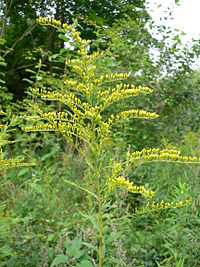 Inflorescence and habit Wikipedia • Commons • Wikibooks (horticulture) • Wikibooks (subject) • Wikispecies • Fruit and seed clock | Profile for Solidago canadensis (Canada Goldenrod)
Recent Logs
| ||||||||||||
Global data:
Lycopersicon
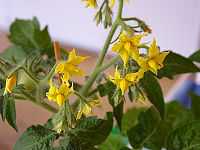 Inflorescence Wikipedia • Commons • Wikibooks (horticulture) • Wikibooks (subject) • Wikispecies • Fruit and seed clock | Profile for Lycopersicon (Tomato)
Recent Logs (flowers)
| ||
Global data:
Temperate zone season(s): Early Summer, Mid Summer, Mid Fall, Late Fall
Rudbeckia hirta
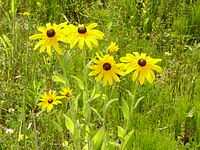 Flowering plant Wikipedia • Commons • Wikibooks (horticulture) • Wikibooks (subject) • Wikispecies • Fruit and seed clock | Profile for Rudbeckia hirta (Gloriosa Daisy)
Recent Logs
| ||||||||||||
Global data:
Temperate zone season(s): Early Summer, Mid Summer, Late Summer, Early Fall, Late Fall
Viola tricolor
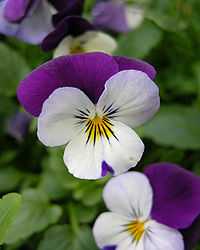 Flowers Wikipedia • Commons • Wikibooks (horticulture) • Wikibooks (subject) • Wikispecies • Fruit and seed clock | Profile for Viola tricolor (Heartsease, Johnny-jump-up)
Recent Logs
| ||
Global data:
Temperate zone season(s): Early Summer, Mid Summer, Late Summer, Early Fall, Mid Fall
Hypericum perforatum
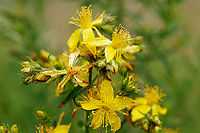 Closeup of flowers Wikipedia • Commons • Wikibooks (horticulture) • Wikibooks (subject) • Wikispecies • Fruit and seed clock | Profile for Hypericum perforatum (St. John's wort)
Recent Logs
| ||||||||||||||
Global data:
Temperate zone season(s): Early Summer, Mid Summer, Late Summer, Early Fall, Mid Fall
Oenothera
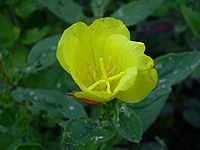 Flower of O. macrocarpa Wikipedia • Commons • Wikibooks (horticulture) • Wikibooks (subject) • Wikispecies • Fruit and seed clock | Profile for Oenothera (Evening Primrose)
Recent Logs
| ||||||
Global data:
Temperate zone season(s): Mid Summer, Late Summer, Early Fall, Mid Fall, Late Fall
Hamamelis virginiana
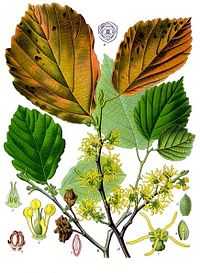 Hamamelis virginiana Wikipedia • Commons • Wikibooks (horticulture) • Wikibooks (subject) • Wikispecies • Fruit and seed clock | Profile for Hamamelis virginiana (Autumn Witch Hazel)
Recent Logs
| ||||||||||
Global data:
Chrysanthemum x morifolium
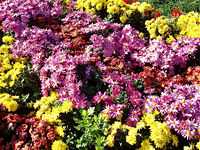 Flowering plants Wikipedia • Commons • Wikibooks (horticulture) • Wikibooks (subject) • Wikispecies • Fruit and seed clock | Profile for Chrysanthemum x morifolium (Hardy Chrysanthemum, Mum)
Recent Logs
| ||
Global data:
Temperate zone season(s): Mid Fall, Late Fall, Early Winter
Rosa
 Flowers Wikipedia • Commons • Wikibooks (horticulture) • Wikibooks (subject) • Wikispecies • Fruit and seed clock | Profile for Rosa (Rose)
Recent Logs
| ||||||||||||||
Global data:
Temperate zone season(s): Late Spring, Early Summer, Mid Summer, Late Summer, Early Fall Mid Fall, Late Fall
last updated 11:42, 31 October 2007 (UTC) with 12 plants